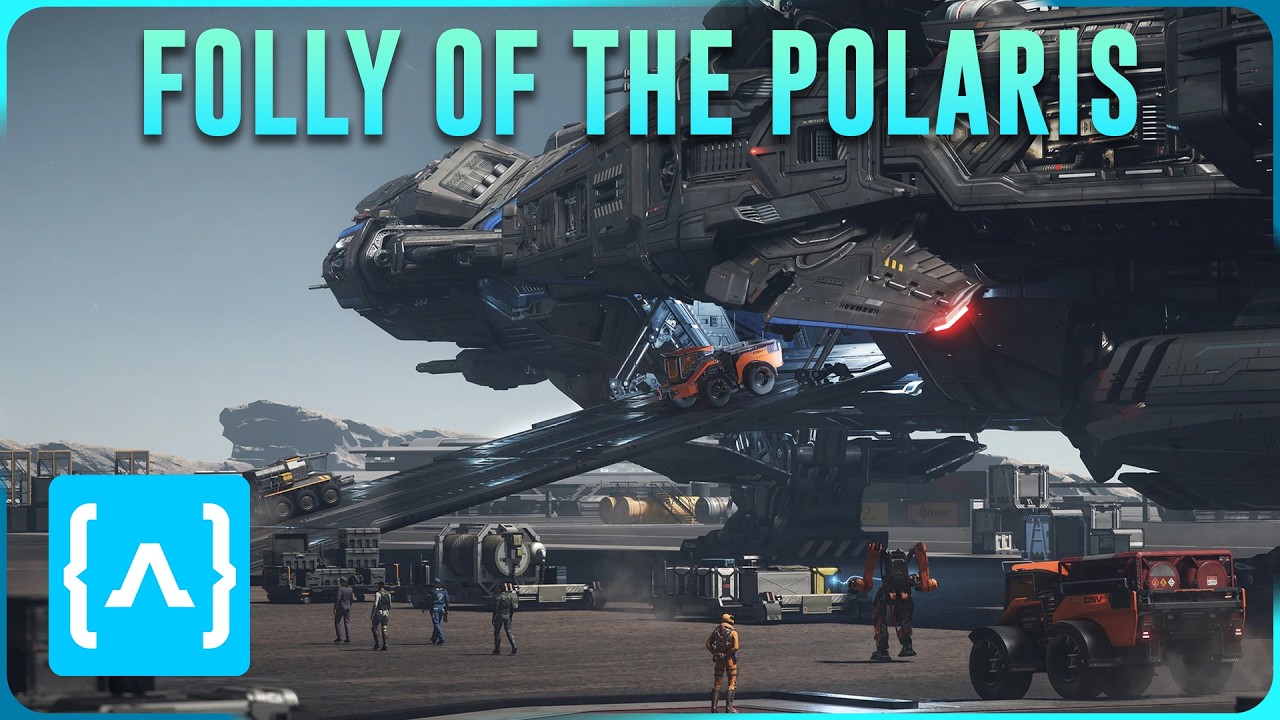The video examines the Polaris as a groundbreaking multi-crew military capital ship in Star Citizen, highlighting its strengths, design quirks, and the challenges posed by automated turrets and solo use. It discusses community concerns about gameplay balance, particularly the exploitation of automated defenses, and proposes solutions like resource-based systems and tactical control stations to improve multi-crew combat and teamwork.
The video discusses the Polaris, a significant addition to Star Citizen as the first truly flyable military capital ship, highlighting its strengths and the features it introduces. It emphasizes that the Polaris expands on capital class components, providing a foundation for future ship rebalancing and reworks. The ship also introduces automated defense turrets (PDCs), which have influenced the community’s approach to ship defenses and led to requests for similar features on other ships. Despite its impressive capabilities, the Polaris has some odd design choices, such as the torpedo operator station being located deep inside the ship and lacking a dedicated seat, which the speaker suggests could be improved by relocating it to the bridge.
The speaker examines how the Polaris is often used both as a multi-crew ship and as a solo vessel, with many owners operating it alone primarily as an expensive cargo hauler. Some players exploit the ship’s automated turrets for various purposes, like solo high-level bounty hunting or blocking points of interest, which can be seen as exploitative or disruptive gameplay. The video notes that such behavior is difficult to prevent due to human tendencies and the game’s current mechanics, and that the ship’s design encourages solo players to use it in ways that may not align with its intended multi-crew, combat-focused role.
A key issue discussed is the current state of automated turrets and the broader problem of multi-crew gameplay. Historically, players relied on NPCs or AI blades to operate large ships’ turrets, but with the introduction of PDCs, the potential for unbalanced automated defenses has increased. The community has observed that players could simply spawn multiple NPC-controlled Polaris ships to massively boost firepower or block areas, which undermines the intended multi-crew experience. The speaker argues that this creates an unfair advantage and diminishes the importance of teamwork and coordination in combat.
To address these issues, the video proposes potential solutions, such as replacing the infinite ammo pools in PDCs with a resource-based capacitor system, allowing for more strategic resource management during battles. It also suggests introducing a weapons control station on the ship’s bridge, where players could direct power to different sectors of the PDCs, adding a layer of tactical gameplay. The speaker envisions that once NPC gunners and AI blades are implemented, these control systems could be expanded further, making ship defenses more interactive and balanced.
Finally, the video explores the broader problem of multi-crew gameplay, contrasting its industrial success with its combat limitations. While large ships excel at resource gathering and salvage, they struggle in combat against multiple fighters or smaller ships, which can outmaneuver and outgun larger vessels. The speaker discusses community proposals aimed at balancing this, such as adjusting ship hit points, weapon behaviors, and introducing armor and engineering features. Ultimately, the video calls for thoughtful changes to make multi-crew gameplay more relevant and balanced, encouraging community input and ongoing development to improve the overall experience in Star Citizen.
